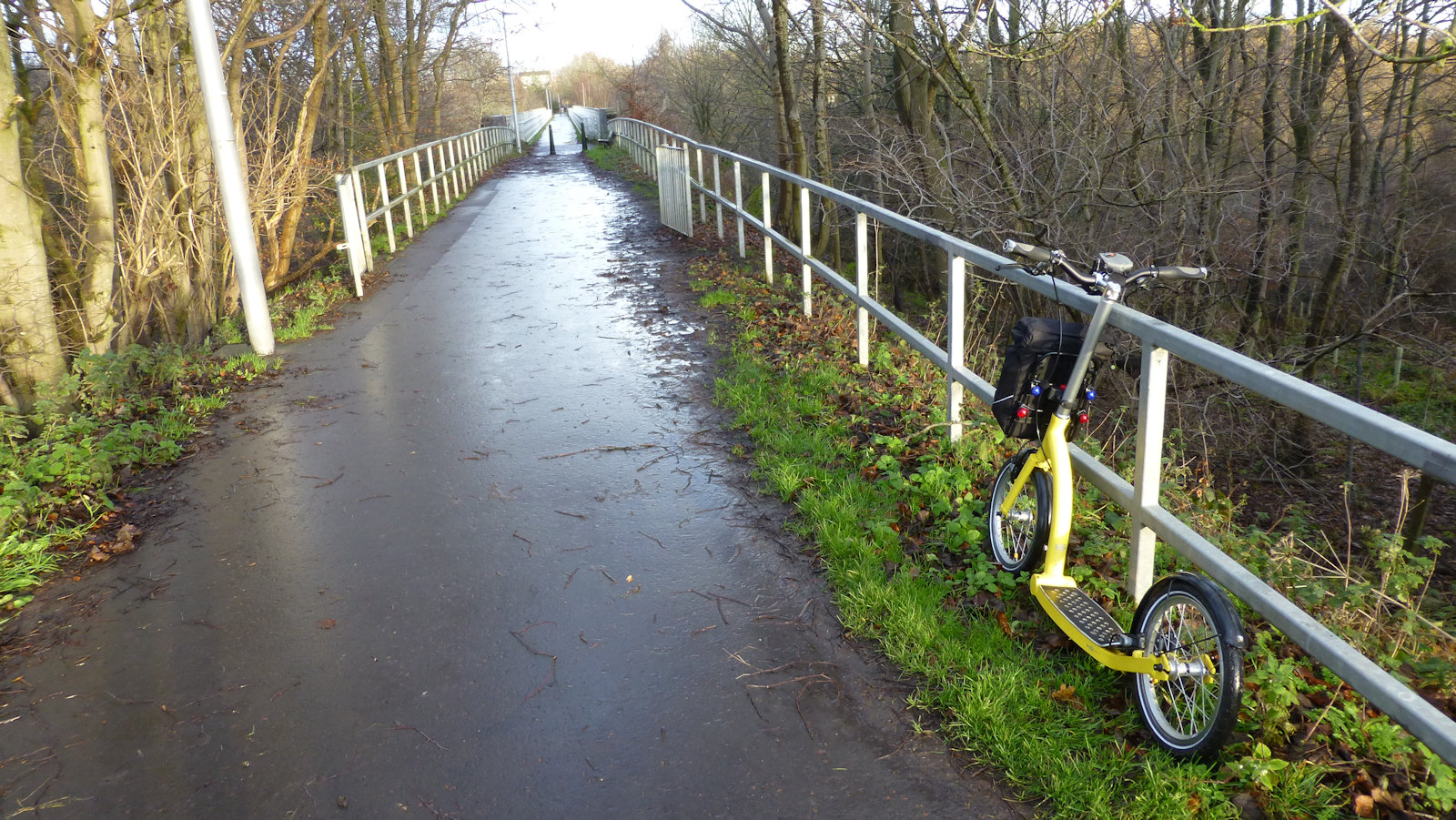In recent years, dedicated cycle paths have become much more common, at least in Midlothian, the region where I live in the south of Scotland and many of them have been created along the course of disused railway lines. These old railways lines are often ideal, running either in straight lines or wide sweeping curves and always with gentle gradients.
These days, however, dedicated cycle paths have evolved into multi-use paths, now being shared with other users such as walkers, runners, dog walkers and horse riders, all thanks to the Scottish Outdoor Access Code and its underlying legislation in the Land Reform Act 2003. So, how do these routes fair for the kick scooter rider?
From experience such routes are usually good, often with good smooth tarmac surfaces or well-graded and compacted gravel, though some can be quite rough depending or their age, amount of wear and tear and how much maintenance is carried out. Most are well sigh-posted though theft of sign posts, and mischief – turning signs to point to wrong way – may need to be kept in mind. Signage is also sometimes small and easy to miss, as I found on a night ride along the Tweed Valley Railway Path in the Scottish Borders.
Other things to be aware of on these routes, particularly old railway lines, are headwinds, cold spots and frost hollows. Some routes can be quite exposed, are the wind can either be a help or hindrance, depending on the direction of travel. By their nature old railway lines may cut through the landscape and be below the level of the surrounding land. Such locations can trap the cold, frosts can longer long into the day, as can water from rains.
Cycle paths or multi-use paths, whatever they are called, also tend to be relatively short, making use of whatever route previously existed and getting from A to B may entail using a range of different type of trail. One minute you are on smooth tarmac, the next a dirt road, followed by a cycle lane alongside a busy main road.
Dangers to look out for, partially in urban areas are broken glass. Some young people seem to think smashing glass bottles on cycle paths is a good idea, so always keep an eye for the sparkle of broken glass. Some dog walkers do not pick up dog poo and cleaning you scooter, and perhaps yourself, after running over some is not to be recommended. In Autumn, wet leaves can accumulate and are slippery when wet, especially on corners and downhill slopes.
Copyright ©2020 Gary Buckham. All rights reserved.


